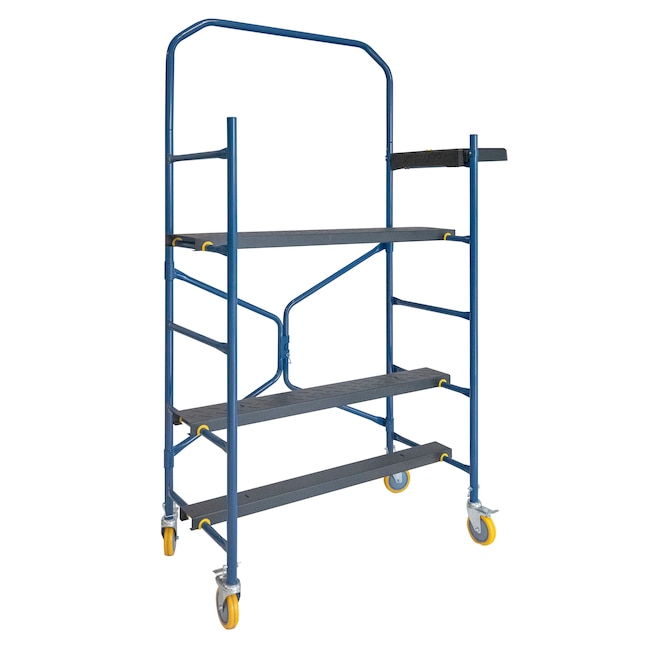Exploring the Various Kinds of Scaffolding Utilized in Construction Tasks
The building and construction industry depends heavily on different sorts of scaffolding to meet details project needs, each offering distinctive advantages and applications. Typical frame scaffolding provides a durable foundation for general tasks, while suspended scaffolding is important for service high-rise structures. Other options, such as system and rolling scaffolding, deal with performance and movement, respectively. The cantilever alternative confirms vital in metropolitan environments where space is constrained. Understanding the nuances of these scaffolding types is crucial for maximizing safety and security and efficiency on building and construction websites, triggering a more detailed assessment of their one-of-a-kind features and applications.

Conventional Framework Scaffolding
Typical framework scaffolding is one of one of the most commonly made use of techniques in the construction sector because of its effectiveness and convenience. This system includes upright and horizontal frameworks that are put together to create a stable platform for workers and products. The primary elements consist of upright articles, horizontal ledgers, and diagonal dental braces, which with each other supply a strong structure that can support significant lots.
Among the key advantages of standard structure scaffolding is its adaptability to different construction projects, varying from residential buildings to large business frameworks. The modular layout permits simple setting up and disassembly, making it reliable for both temporary and lasting jobs. Furthermore, the system can be personalized in height and width, accommodating different building styles and site problems.
Safety and security is critical in scaffolding applications, and typical frame systems are outfitted with guardrails and toe boards to stop falls and make sure employee protection. Regular inspections and adherence to security laws are vital in keeping the stability of the scaffold (Scaffolding). Generally, conventional structure scaffolding continues to be a fundamental option in the building sector, providing a reliable platform for labor and enhancing general task effectiveness

Suspended Scaffolding
Suspended scaffolding provides a special option for building tasks that need accessibility to elevated surface areas, particularly in circumstances where typical structure scaffolding might be impractical. This kind of scaffolding is typically suspended from the roof covering or upper levels of a structure, making use of a system of systems, ropes, and wheels to produce a functioning area that can be readjusted to various heights.
Among the primary benefits of put on hold scaffolding is its versatility. It can be easily rearranged or decreased to fit adjustments in building and construction needs, making it perfect for jobs such as home window installation, façade job, and maintenance on skyscraper buildings. Additionally, the minimal footprint of suspended scaffolding enables for much better use of ground area in metropolitan atmospheres, where area is frequently restricted.
Safety is an essential consideration in the use of suspended scaffolding. Overall, put on hold scaffolding supplies a reliable and effective service for accessing hard-to-reach locations in different construction scenarios, boosting both efficiency and safety on website.
System Scaffolding
System scaffolding, usually considered as a contemporary service in the scaffolding sector, consists of pre-engineered components that can be promptly put together and adapted for various construction jobs. Scaffolding. This type of scaffolding is identified by its modular layout, which enables versatility and performance on task sites, suiting structural requirements and different elevations
Normally made from high-strength steel or aluminum, system scaffolding uses enhanced toughness and stability. The elements consist of vertical articles, horizontal ledgers, and angled braces, which adjoin safely, ensuring a durable framework. The style often integrates standardized installations, streamlining assembly and disassembly processes, thus decreasing labor time and costs.

Rolling Scaffolding
Moving scaffolding is a flexible alternative to typical set scaffolding, developed for mobility and convenience of use on construction websites. This sort of scaffolding consists of a system supported by structures with wheels, enabling employees to quickly relocate it as required. The mobility attribute substantially improves performance, as it lessens downtime related to dismantling and putting together repaired scaffolding.
Usually constructed from light-weight products such as aluminum or steel, rolling scaffolding offers a tough yet portable solution for jobs requiring regular repositioning - Scaffolding. It is particularly helpful in jobs such as painting, drywall installation, and electric job, where discover this info here access to different elevations and locations is needed
Safety is vital in rolling scaffolding layout, with features such as securing wheels to avoid unintended movement when in operation, and guardrails to secure employees from falls. Additionally, lots of versions are flexible in elevation, accommodating various job demands.
Cantilever Scaffolding

The design of cantilever scaffolding generally involves making use of braces or arms anchored to a building or structure, making it possible for the platform to expand outside safely. Safety and security is critical; hence, these scaffolds need to be engineered to withstand various tons and environmental problems. Normal evaluation and upkeep are vital to make certain structural honesty and worker security.
Cantilever scaffolding is preferred for its flexibility and reliable usage of space, making it a preferred choice in metropolitan settings where space constraints are usual. Furthermore, it promotes easier access to high altitudes, ultimately adding to the general performance of construction jobs. Just like all scaffolding types, appropriate training and adherence to safety and security criteria are critical for workers using cantilever Continued scaffolding.
Verdict
Conventional frame scaffolding gives security, while suspended scaffolding offers versatility for raised tasks. System scaffolding helps with fast setting up, and rolling scaffolding improves mobility for differing work environments.
Typical structure scaffolding supplies a strong foundation for basic jobs, while suspended scaffolding is important for job view it now on skyscraper frameworks.Rolling scaffolding is a functional option to traditional set scaffolding, created for wheelchair and simplicity of use on construction websites. As with all scaffolding types, appropriate training and adherence to safety criteria are vital for workers making use of cantilever scaffolding.
Standard frame scaffolding gives security, while put on hold scaffolding offers convenience for raised jobs. System scaffolding helps with fast setting up, and rolling scaffolding improves flexibility for differing work settings.